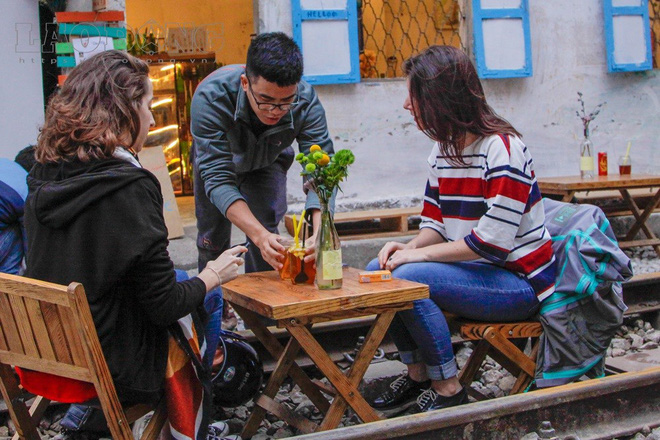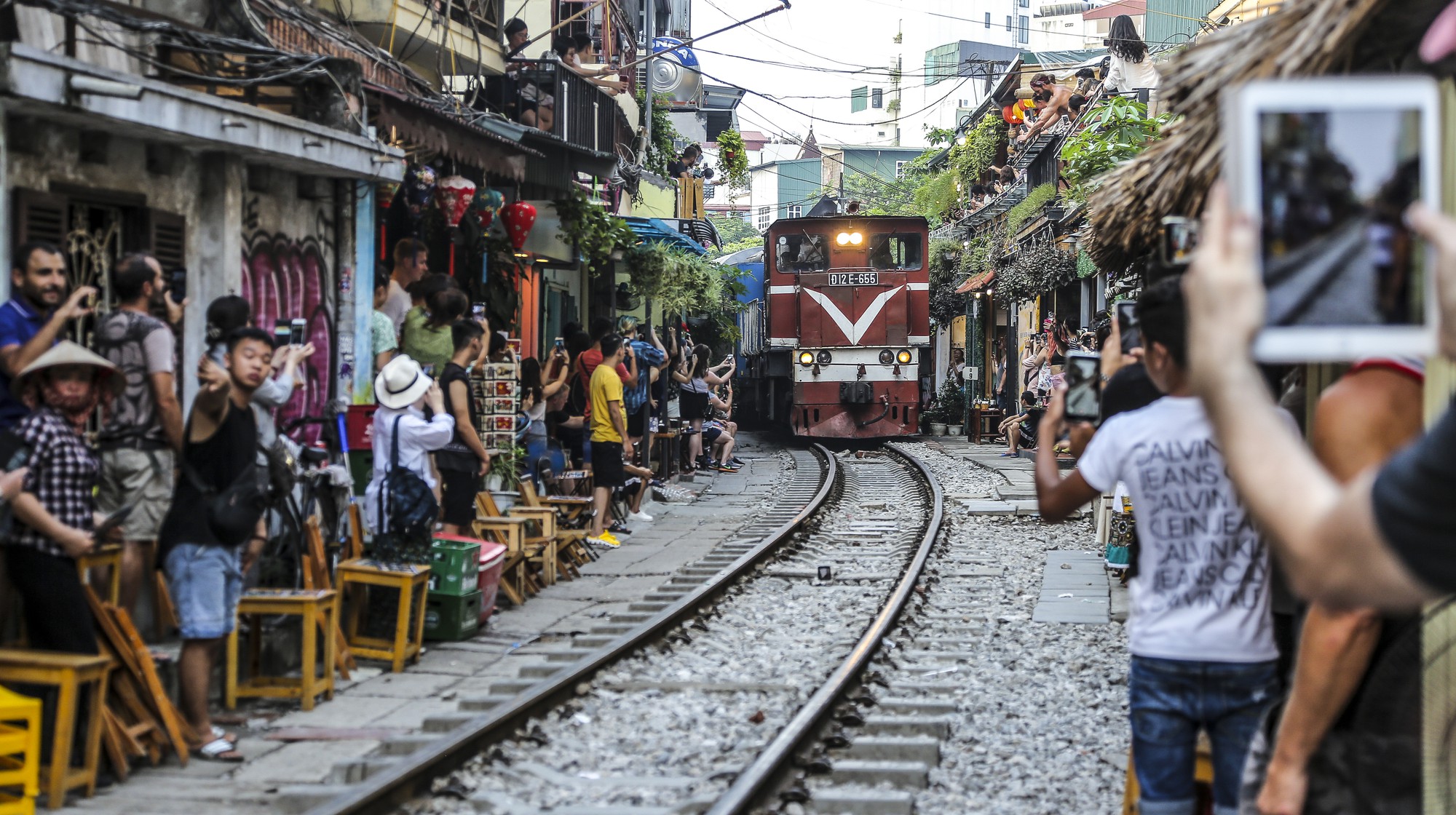In recent months, a series of coffee shops have sprung up along the railway from the intersection with Dien Bien Phu Street to Phung Hung, serving young people and foreign tourists who want to experience the life of the people living on both sides of the railway and watch the train running through the old town. However, this situation poses many potential dangers for both residents and tourists.

Therefore, on October 4, the Ministry of Transport issued a document requesting the Hanoi People's Committee to direct the districts of Hoan Kiem, Ba Dinh, Dong Da, and Hai Ba Trung to strengthen the dissemination of railway laws to the people, and at the same time request the dissolution of coffee shops in the railway corridor, and develop plans to ensure railway traffic safety when carrying out land allocation procedures for businesses and people as well as when planning residential areas.
Hanoi is requested to preside over and coordinate with the Vietnam Railway Authority and Vietnam Railway Corporation to continue to thoroughly clear violations by households currently doing business in the area adjacent to the railway, holding markets and trading goods on the railway; and to prevent and disperse crowded gathering places for filming, taking photos, and sitting and drinking coffee on the railway.

"The city must handle the responsibility of local leaders who allow the emergence of additional self-opened walkways, encroachment on corridors, or re-encroachment and illegal use of land in railway traffic safety corridors," the Ministry of Transport stated.
"Train Street Coffee"
This is the way many people still jokingly call the activities of coffee shops located in the railway safety corridor in the wards of Dien Bien, Hang Bong, and Cua Nam (in Hoan Kiem district, Hanoi).
There are 6 railway lines running through Hanoi with a total length of over 160 km. In particular, there are 560 intersections between railways and roads.

































